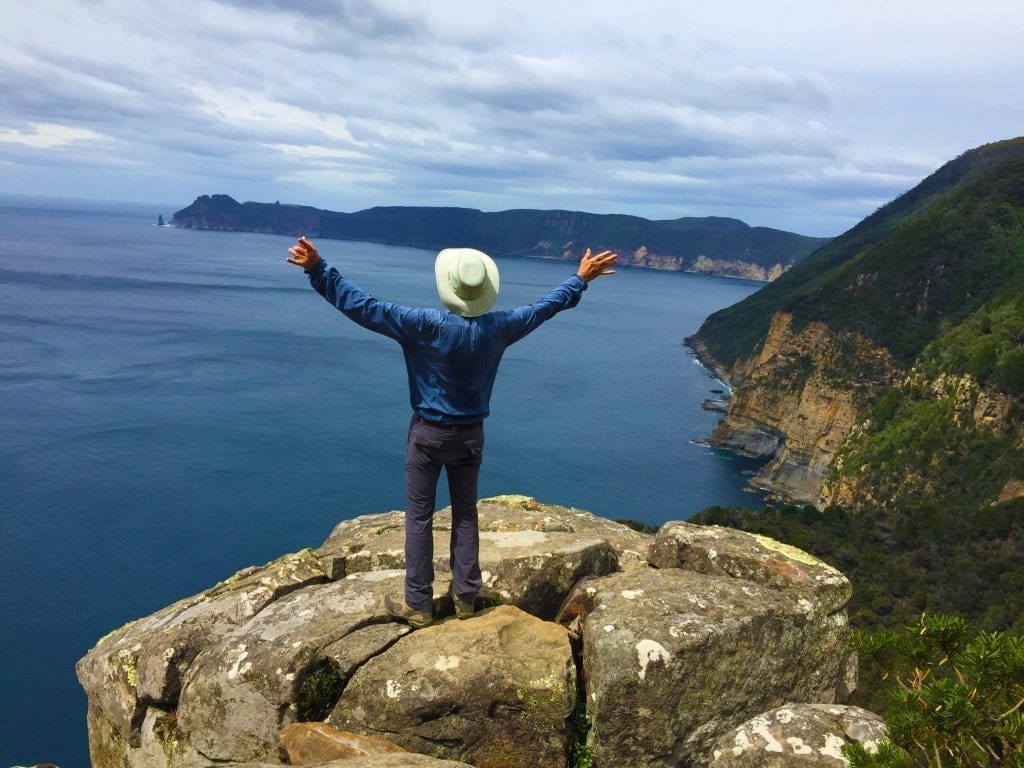Ecotourism, National Parks
National parks: where to from here?
Good and bad
The Chair of Tourism and Events Queensland, Brett Godfrey has a message: open up national parks for more ecotourism. This call is both exciting and terrifying, good and bad, hopeful and discouraging.
There are enough examples around the world of visitor facilities inside national parks that enhance the visitor experience and at the same time, through education, help to protect the park. If you will forgive a little circular meme:
Through conservation – knowledge.
Through knowledge – respect.
Through respect – conservation.
National parks – a place for us?
As a starting point we should ask – should people even be in national parks?
As their prime purpose is preservation and conservation, many people would clearly answer no.
I know rangers who, having cleaned up yet another human scat and toilet paper, would happily ban homo sapiens from all national parks. That, however, brings us back to education and the Three Capes Track offers a perfect example. Recently hiking this 46km trail, we saw not a single human scat on the first 40km. On the last 6km, there were dispiriting signs of human toiletry everywhere. The difference? Hikers staying in the three Park Service huts were told about bush toileting in both print and word at the first ranger briefing and were asked to carry a trowel. Walkers on the last 6km were “day hikers” who could walk from the car park without seeing a ranger.
A ranger in the Yosemite National Park once told me that every national park needs a sign at the entrance saying – if you can do it somewhere else then don’t do it here.
Taken to the extreme, that would mean we could not walk in a national park. Of course, walking is the best – the only – way to truly experience a national park – and preferably slowly and in silence. We would do well to emulate the Japanese with their concept of shinrin-yoku or forest bathing. It’s easy if we try – just be in the moment, in silence.
The arguments for and against visitor facilities inside or outside national parks are circular, endless and divisive. The most important question is how much control is there? Gatlinburg or Cherokee are cautionary tales of exploitative ecotourism. These towns offer fun rides, flashing neon signs and theme parks. The towns are so ugly that anybody attracted to national park values would not want to stay there – yet they exist entirely because of Great Smoky Mountains National Park and there is no other viable place to stay. We must remain ever vigilant that access does not turn into exploitation of precious protected areas.
Our national park estate is so limited and precious that the thought of sacrificing even one hectare for a building is abhorrent to many. When ownership remains with the park service, control is not lost, and standards can be maintained. The ideal, of course, is for accommodation to be built on buffer land outside the park, close enough to hear the dawn chorus of birds in the forest, but still controlled by the national park service.
To me the liquid notes of a lyrebird calling in Lamington are akin to Greta Bradman singing Casta Diva. If I can step outside my bedroom and gaze at a night sky undiminished by the lights of a town, then I’m in heaven.
Finding the balance
So where to from here? Having walked the magnificent Arthur Thorsborne track on Hinchinbrook Island several times, carrying a six-day pack, I have a selfish wish that it remains accessible only to those able and willing to carry a 20kg pack. That position is indefensible, and I must admit that a Three Capes type walk on Hinchinbrook would be a magnificent addition. It would do less damage than the existing track, especially if all human waste is helicoptered out.
One of our oldest and most respected national parks, Lamington, already offers 147km of walking tracks and two lodges. Most visitors would regard these as national park based lodges but there is no guarantee that they remain so. Both are built on private freehold land, surrounded by national park with little control over them by the government park service. There is a possibility, admittedly small, that either could be sold and the land subdivided for urban homes or unsuitable development.
Lamington is also the site of our first great walk, 54km from O’Reilly’s to Springbrook. Like the Thorsborne Trail, this is currently limited to those carrying a full pack. The Three Capes Track cost an eye watering $25,300,000 to build the three accommodation centres, many kilometres of boardwalk and stone steps. For a fraction of this sum, the Gold Coast hinterland could be changed to offer a hiking experience catering to everyone from pack carrying wilderness devotees, to those who can carry a lighter pack, or those who seek the full food and accommodation experience – like the choices offered on the famous New Zealand walks and the Overland Track in Tasmania.
The wilderness experience could also be offered in the Daintree but surely there is enough private land to build facilities adjacent to the park. Rainforest Rescue has spent 16 years and millions of dollars, patiently buying up uncleared blocks left over from the disastrous real estate development of the 1970’s. They would be mortified if a single rainforest tree was felled for a tourist facility.
It doesn’t reflect well on our past governments that most of our great national parks are the result of one or two people, or under-funded conservation groups beavering away for their protection. We owe it to these people, who helped create our national parks, to consult with them before more visitor facilities are added to areas set aside for conservation purposes.
Tony Groom will present his views on the current state of national parks in Queensland and elsewhere at the next members meeting on the 21st of February.


